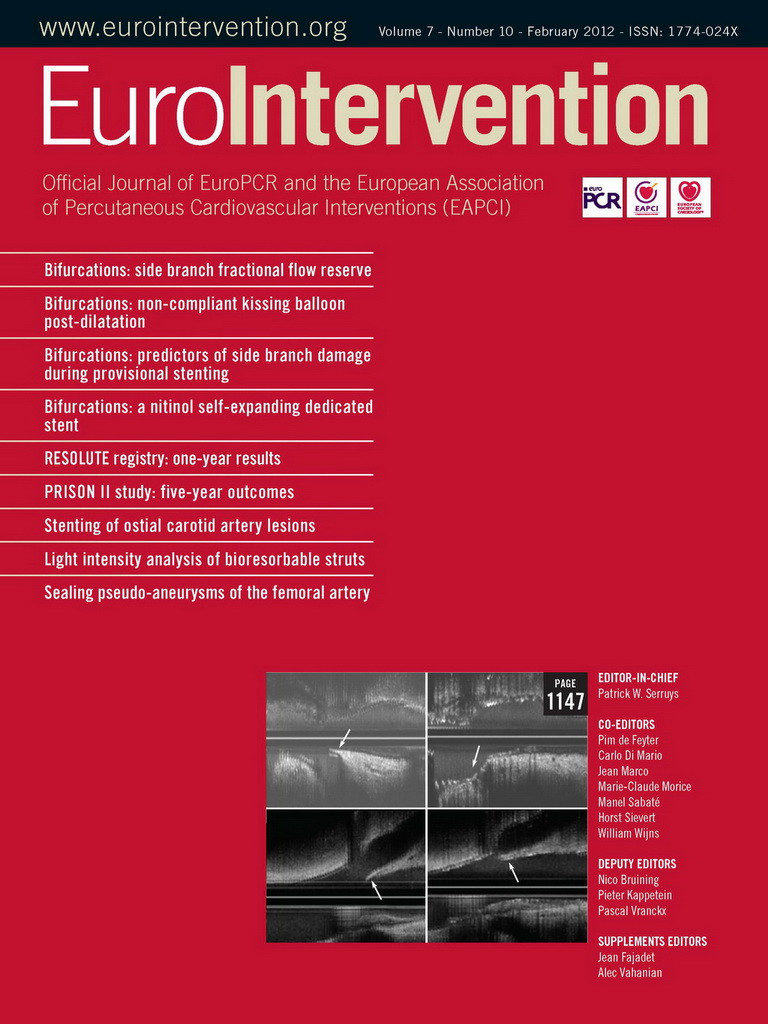This issue of EuroIntervention is comprised of several papers related to bifurcations, and a few of the other editorials will be dealing with this subject as well. As in many of the problems we address in interventional cardiology, dealing with bifurcations is not new; the first kissing balloon technique was used in the 80’s, with two 9 Fr guiding catheters. Looking briefly, we can see the history of our treatment of bifurcations roughly divided into the three different epochs that characterise interventional cardiology in general: treatment by plain old balloon angioplasty (POBA), bare metal stents (BMS) and drug-eluting stents (DES). Throughout these different periods, the concentrated effort on treating bifurcations has led to the development of special dedicated devices as well as the promulgation of specific techniques. The impact of new antiplatelet regimens, the use of increasingly performant imaging equipment, all play a role in our ability to treat bifurcations.
All this has been touched on many times before, but what interests us from the point-of-view of the EAPCI is in the organisation that surrounds this particularly complex lesion subset. How we approach bifurcations both as individual clinicians and as a group is exemplary, and demonstrates the advancement of our work by discussion and consensus exemplifying what we often say about how together we can achieve more.
The European Bifurcation Club is a very notable example of this collaboration among specialists. The consensus documents of the EBC, often published in this journal, help guide the discussion and advance the treatment. Our role as an organisation is similarly to facilitate the work of groups like this, helping to not only diffuse the information, but to provide the structure that can lead both the discussion about and the evolution of, this treatment as well.
We can do this through training and education. The EAPCI, by supporting the upcoming PCR textbook with its chapters on bifurcation, through our meeting, EuroPCR with live case transmissions as well as its specialised “learning-the-technique” (LTT) sessions and “How should I treat (HSIT)?” sessions, through dedicated PCR seminars and through this journal itself. We all know that EuroIntervention’s bifurcation supplement was very well received and successful, with a growing demand that it be updated. The website is a major tool for education. EuroPCRonline, which is connected with EAPCI, is a source of information where cases, videos, as well as discussions related to bifurcation treatment are available.
In the coming months we will be collaborating closely with our parent organisation, the European Society of Cardiology on the ESC eLearning platform. This innovative, accessible and interactive programme will also look at the treatment of bifurcations, and will do so through the considered input of the EAPCI.
Bifurcations represent a challenge that we must face in our daily practice as individuals and in our speciality in general and it is through pooling our collective expertise that we can truly advance its treatment.

